Planes, trains and automobiles
Not quite in that order, but this time we really created an interesting loop of Tanzania, using several means of transport to get to the little-known, but well-worth-the-visit Unesco World Heritage Site of Kondoa Rock Art.
“What is it?” and “Where is that?” were the most common questions before heading off on our weekend, followed closely by “You are going by train?” and then lots of giggling, especially from our local colleagues.
After deciding we really wanted to visit Kondoa, we realised we had created ourselves a small logistical challenge to get there if we didn’t want to spend a fortune on flights.
The Kondoa Rock Art area is located 140km north of Dodoma, the capital of Tanzania, on the road to Arusha. Some other distances are:
- Dar es Salaam to Dodoma – 575km
- Dar es Salaam to Arusha – 630km
- Kondoa to Arusha – 290km
We knew that our driving speed on Tanzanina roads is on average 50km per hour, so driving all the way from Dar es Salaam to Kondoa and back would take us around 30 hours if we would go via Dodoma.
Taking a plane to Dodoma and sending Frank to meet us there with the car was also not an option as it is very expensive to fly to Dodoma (because there is nothing there and nobody wants to go there, so there are not many options available).
Flying to Arusha instead would be an option, reducing the driving time to roughly 10 hours for the round-trip. But there is also a train that runs four times a week between Dar es Salaam and Dodoma. In fact, it actually goes all the way across the country to Kigoma, is called the Central Line and was built by the Germans between 1905 and 1914. To reach Kigoma from Dar es Salaam on the Central Line takes 40 hours according to the current train schedule. Our intended journey would only be a fraction of this time – 16 hours.
We investigated train schedules and realised we could take the 3pm Friday train and arrive in Dodoma at 7am on Saturday morning, travelling first class in a sleeper cabin for the total of 34,900 Tanzanian Shillings (roughly 20 AUD or 13 EUR) per person. A bargain. Although it may not appear to be a bargain if the train is seriously delayed, something it often does…
We made further plans. Frank was going to drive Esther’s car (yep, the same one with the diplomatic plates) to Dodoma for us. The four of us (Barbara joined again as well) would take the train to Dodoma and then drive the car to the Kondoa Rock Art area. Frank would spend time with his family in Dodoma and take the bus to Arusha on Monday. We would be able to explore the rock art sites and meet Frank again in Arusha on Monday evening. He would then drop us off at Kilimanjaro airport before driving Esther’s car back to Dar es Salaam on Tuesday. We would fly back on Monday night late, so everybody could be back at work again on Tuesday morning. What could possibly go wrong?
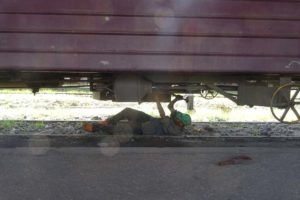
it doesn’t bode well if half an hour before our departure a guy with a hammer is working underneath one of the wagons and bits are laying next to him…
A lot, but it didn’t. We were in the centre of town at 2pm on a Friday afternoon and worked our way onto the platform. There we found the ‘board’ with our names on it so we could work out where we were supposed to be on the 16 carriage long train. It all worked and soon we were dumping our bags in our cabins, buying water for the journey, investigating the restaurant car, and checking out the rest of the train and the station.
With plenty of time left to spare, we started to place bets on our expected departure time. And were all very surprised when the train actually made announcements of its imminent departure at 5 minutes to 3pm, and nearly fell of our chairs when it actually started moving at 15.09! Falling of our chairs had more to do with the physical jerky movements of the train, then with our surprised state of mind though and we realised it would be a rough journey. Not only the train, but also the tracks appeared to be still original, and thus more than 100 years old…
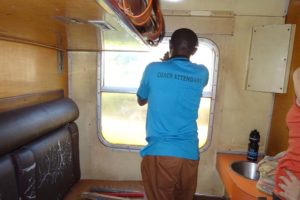
our train attendant trying various sticks to give us one to close the window after Morogoro to prevent break-ins
We hung out the windows and doors, watching the world go by, slowly. Very slowly. We bounced our way to the restaurant car to place our orders for dinner, cracked open a bottle of wine and continued watching the world go by, ever so slowly. When it was time for our dinner the train had stopped somewhere and we enjoyed the stationary train whilst we ate, it was stationary for a long time.
We eventually made our beds with the sheet, blanket and pillow that were handed out to us at the start of the journey by the carriage attendant, and went to bed in the hope time would pass quicker if we slept. For some it did, but most of us couldn’t sleep much on the rough tracks and were exhausted in the morning. But, to our astonishment, we rolled into Dodoma station at 7 o’clock sharp, not a minute late, and were soon reunited with our car for the trip.
We had some mandazi and tea in a local café for breakfast, drove around Dodoma to see the sites (parliament) and dropped off Frank at his sister’s place (Rose) where we met some more members of the family.
After a stop for a cup of coffee we then drove to Kondoa on Tanzania’s best road. Smooth tarmac, no potholes and no traffic. It was bliss.
We arrived in Kondoa district and after driving through Kondoa town we easily found the office of antiquities in a small village called Kolo. We paid our entry fee (only 13,000TzS for a resident), which turns out is valid for 5 days, and hired a guide for the afternoon. Husna, our guide, suggested we visit sites B1, B2 and B3 at Kolo first. They are easy to access and we have time to visit them in the afternoon, but first we drop off our bags at the Amarula Campsite.
Amarula campsite is run by Sepo (a Fin man) and Sarah (a Maasai lady) and is located in a perfect spot, central to most rock art sites. It is basic, but the food is excellent and mostly local. Barbara and Esther had booked one of their tents and we had booked their cute, self-built cob house.
It was a reasonable drive on 4wd tracks to the Kolo sites and a short walk up the hill after parking the car. And then we were finally looking at the ancient, Tanzanian rock art. 186 sites were catalogued, traced and documented by Mary Leaky in 1951 and she was the driving force behind protecting the area around all sites. New sites have been uncovered since, and in 2006 it was added to the Unesco World Heritage list, but unfortunately no additional protection was added.
The rock art is amazing and the views from the hill over the forest are spectacular. We really enjoyed every site and took loads of photos. Some of the art has faded a little, or has been vandalized, but overall we were very impressed with the state of the paintings. Most of the art on the Kolo sites is done in red ochre, which are the eldest although no exact date has been determined for any of the art. The red paintings are usually dated between 3,000 and 28,000 years ago. The black paintings between 150 and a few thousand, and the white is thought to be between 300 and several thousand years old.
The next day we spent over an hour in the car, past small villages, across fields and on boda boda (motorbike) tracks before reaching our destination. Our guide struggled a little to find it, but with some help from a colleague and us fanning out to assist with the searching, she managed to find all three. These were the Thawi Hill sites and we visited three clustered close together again. The art was very different in some places, had unusual animals (aardvark) and even showed a painting of what appeared to be a didgeridoo!
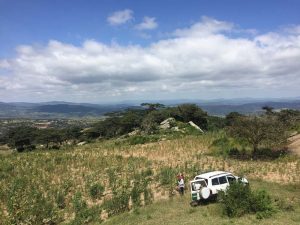
our second mode of transport, the car, parked in a field in the middle of nowhere after driving for an hour on boda boda (motorbike) trails
After a delicious lunch we headed out to the Pahi Lusangi sites, another three clustered together, this time at the edge of fields. We saw more geometric art here, but also still some red paintings. Our last sites at Pahi Markasse were a little harder to find. Not helped by the fact that our lovely guide had never been there…. We searched for a while, but with so many potential rocks in all directions we had no idea where we were supposed to be. We hiked back and tried to find a local who could guide us. We found three young guys who raced us back through the fields of sunflowers, beans and sorghum to a completely different area. Bush-bashed up the hill, past some rocks and eventually found what we were looking for, white geometric paintings on an overhang with a great view of the valley below. They were not as impressive as the red ochre paintings (we thought), but we were still happy we saw some of the white paintings too. Actually, we were really happy we came here to see the rock art. It was well worth the long trip from Dar es Salaam.
Sepo, our Finnish host, recommended we stop at Lake Babati on the way back for a little hippo and bird watching canoe trip on the lake. It was an excellent recommendation and we really enjoyed our boat trip with 7 (!) people in one dugout canoe! It was the biggest dugout canoe we had ever seen. We only saw the hippos from a distance, but did manage to find a gorgeous monitor lizard and loads of birds, including three new species for us!
In Arusha we stopped at the coffee lodge for a smoothie and cake, before checking out the cultural centre. They have some impressive original artwork there, as well as the usual cheap stuff, but we didn’t really like the centre. We found a restaurant for a quick, but delicious dinner before meeting Frank again who dropped us off at our last mode of transport – our plane home.
Our plane, train and automobile had all proven to be very reliable this long weekend, something we had not expected, but was very welcome. We’re back home again, reminiscing about our latest adventure, and of course already planning our next! Where do you think we should go?


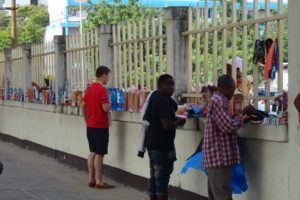
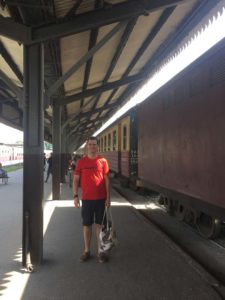
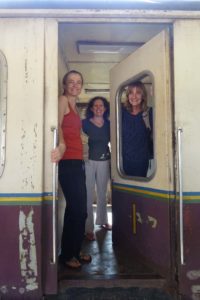
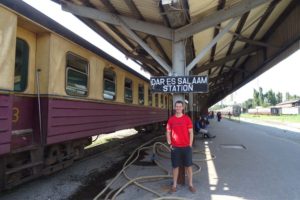
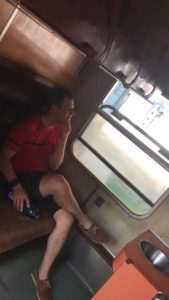

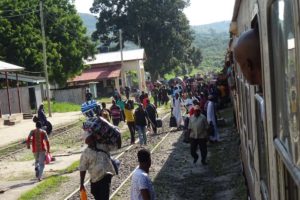
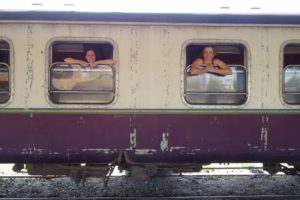
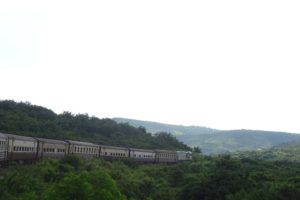
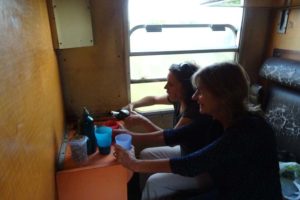
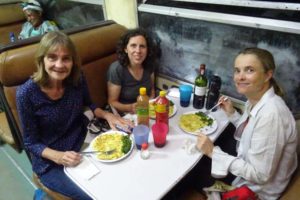
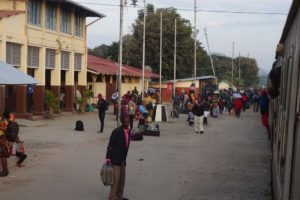
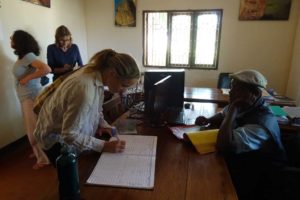
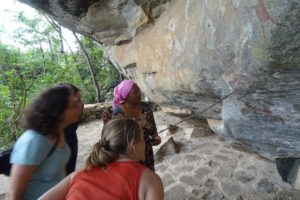
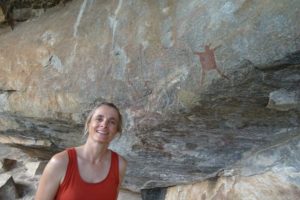
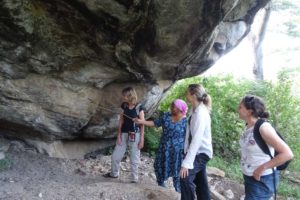
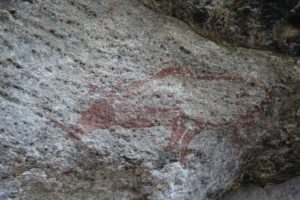
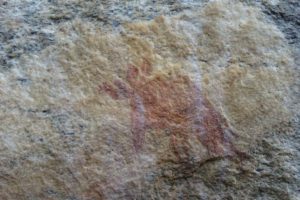
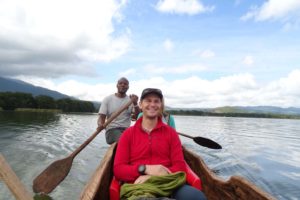
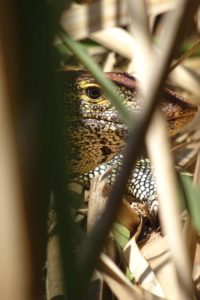
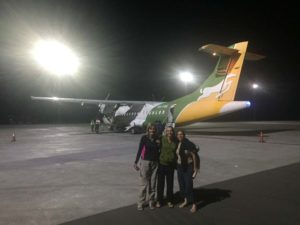
You two are always finding exciting things to do. Keep having fun.
D & J
Thanks D & J, we will!! More stories to come with some more different things here in Tanzania! Big hug, J&Jx